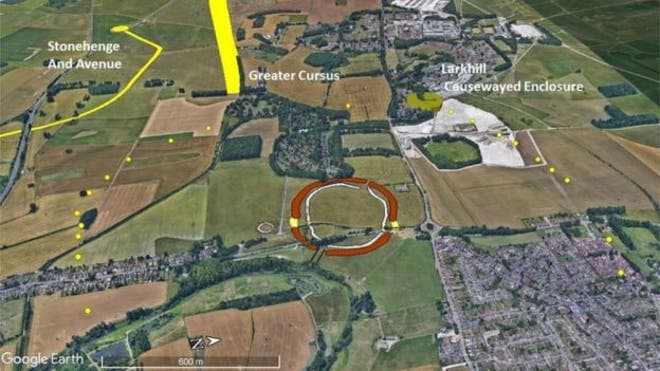Yellow dots represent locations of the shafts, and the red circle marks Durrington Walls
(University of St Andrews)
Site ‘offers us new insights into the lives and beliefs of our Neolithic ancestors’, expert says
Dr Richard Bates, of St Andrews’ School of Earth and Environmental Sciences, said: “Yet again, the use of a multidisciplinary effort with remote sensing and careful sampling is giving us an insight to the past that shows an even more complex society than we could ever imagine.
“Clearly sophisticated practices demonstrate that the people were so in tune with natural events to an extent that we can barely conceive in the modern world we live in today.”
Tim Kinnaird, of the same school, said: “The sedimentary infills contain a rich and fascinating archive of previously unknown environmental information.
“With optically stimulated luminescence profiling and dating, we can write detailed narratives of the Stonehenge landscape for the last 4,000 years.”
Read the rest of this article...

No comments:
Post a Comment
Note: Only a member of this blog may post a comment.